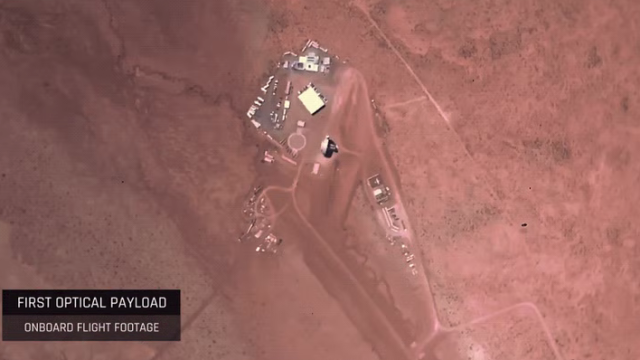California startup SpinLaunch recently performed the eighth demonstration of its suborbital mass accelerator, but unlike in previous tests, this flight vehicle was equipped with an onboard camera, providing an unprecedented view of the high-altitude launch.
This latest test happened on Friday, April 22, at the company’s 33-metre suborbital mass accelerator in the New Mexico desert. Such tests are becoming routine for SpinLaunch, with the first demonstration of the kinetic launch system occurring last October. This time, however, the company did something new by strapping a camera, or “optical payload,” onto the 3.05 m-long projectile.
Footage from the onboard camera shows the projectile hurtling upwards from the kinetic launch system at speeds in excess of 1,609 km per hour. The flight lasted for 82 seconds, during which time the test vehicle reached an altitude of over 7,620 metres, according to David Wrenn, vice president of technology at SpinLaunch.
Watching the video, you can see the launch facility quickly receding from view as the projectile ascends rapidly. The spinning — enough to make you feel queasy — is part of the design. The fins on the test vehicle “are slightly angled to induce a spin and provide additional stability during flight,” Wrenn explained, saying it’s much like a bullet when fired out of a rifle.
Incredibly, the A-33 Suborbital Mass Accelerator is still operating at a fraction of its maximum capacity. What’s more, the facility is a one-third scale version of what SpinLaunch is intending to build: an orbital accelerator capable of shooting objects to the edge of space. The full-scale version is expected to propel objects to the upper atmosphere at speeds reaching 8,000 km/h, at which point a propulsion stage will kick in to finish the job, sending small payloads to low Earth orbit. The California startup figures it can use this innovative approach to launch objects as heavy as 200 kg, like small satellites, on-orbit scientific experiments, and building materials, among other things.

SpinLaunch was “thrilled” to see the onboard flight footage for the first time, as it was “a camera angle the team has been imagining for some time, so it’s very validating to see it come to fruition,” Wrenn said. This, the eighth test of the kinetic launch system, was also unique in that it tested a new recovery payload system; the onboard parachute deployment system is meant to reduce damage to the projectile on landing, which should increase the recovery and reuse rate of the flight test vehicles.
In early April, SpinLaunch signed an agreement with NASA to develop, integrate, fly, and recover a space agency payload with the company’s suborbital launcher. A test is expected later this year, after which time NASA will evaluate possible next steps. The latest test suggests the system is capable of launching cameras without destroying them — a good sign, considering that the intense g-forces within the centrifuge could conceivably damage the delicate components found in satellites.
Looking ahead, SpinLaunch plans to perform one to two flight tests per month, “flying faster, higher, or testing different payloads each time,” Wrenn said. The company also plans to use more advanced cameras during these tests and capture data that could further validate the concept.
